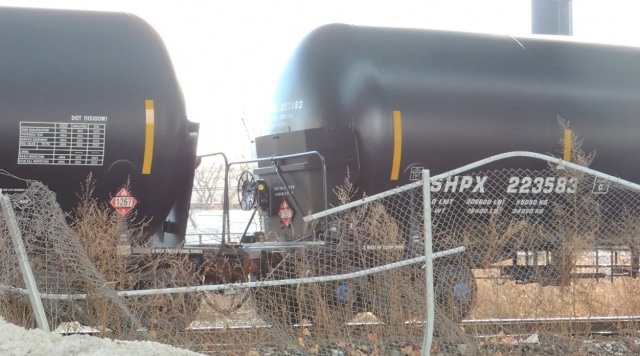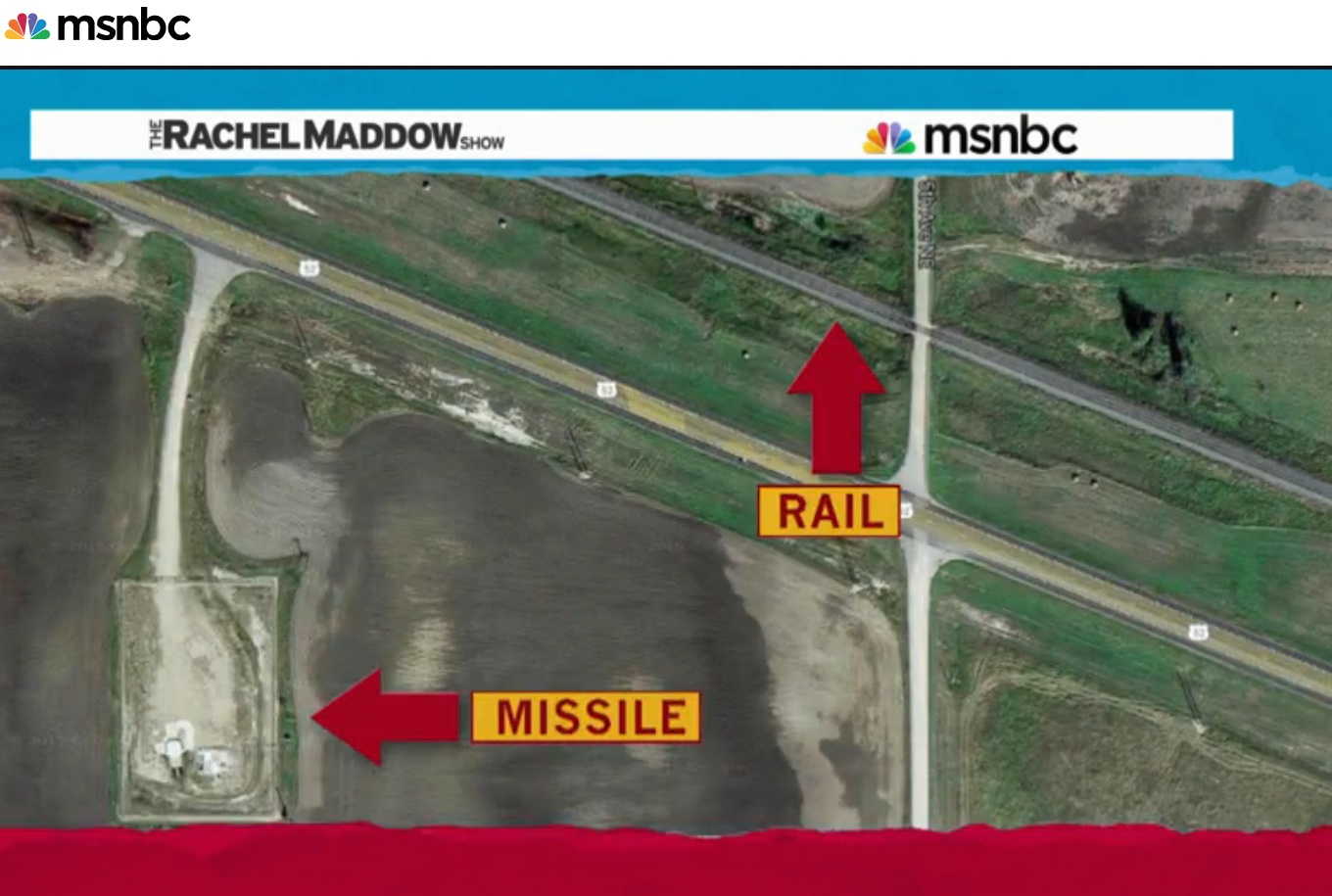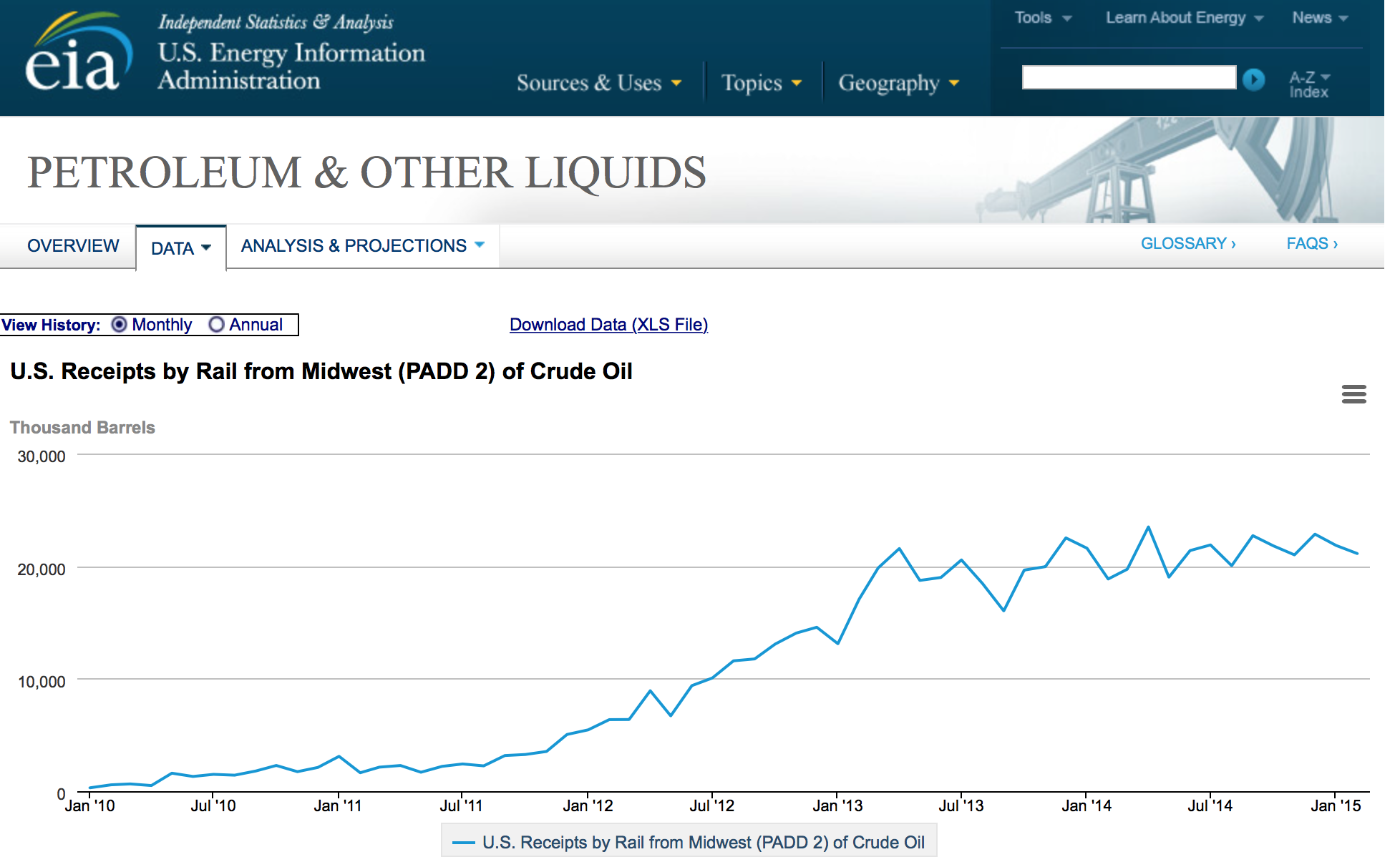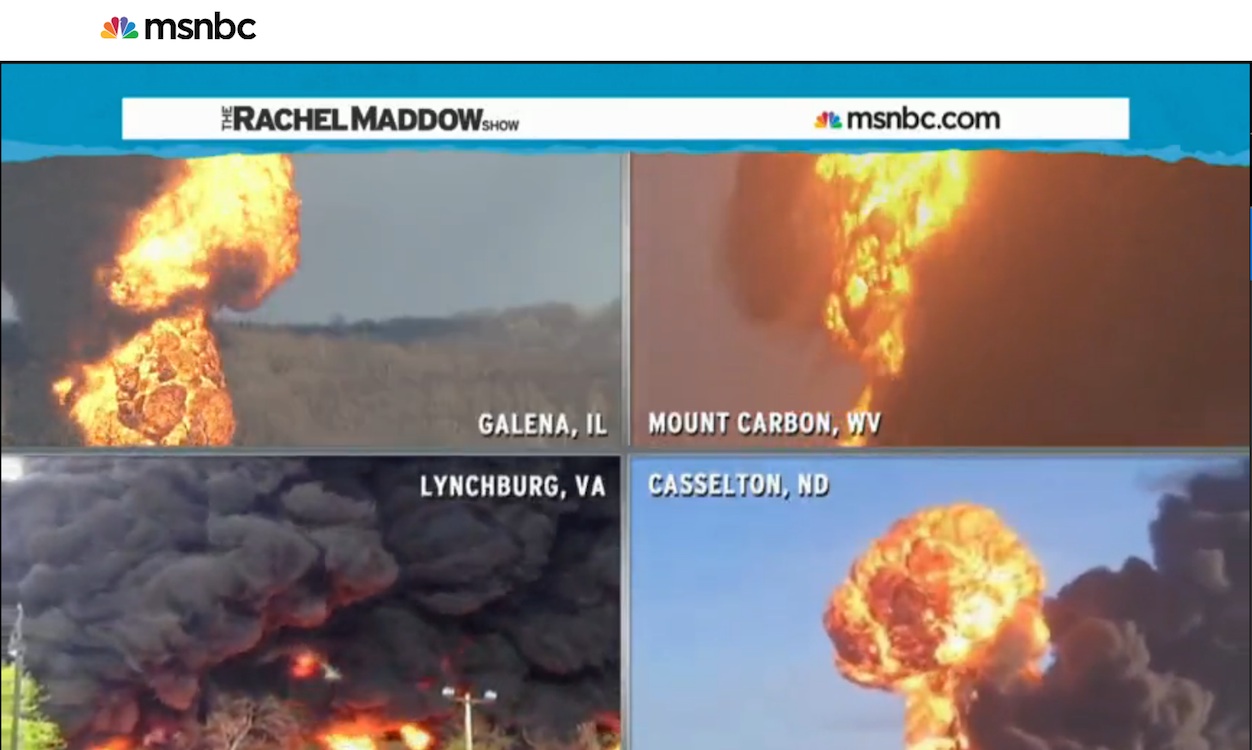The latest oil train derailment and explosion in Heimdal, North Dakota is another frightening reminder of the danger this industry poses to communities across the country. Thankfully evacuating Heimdal wasn’t that big an operation because there are only 27 residents in the town.
Which is a significantly smaller number than the 150 nuclear missiles buried in the ground under North Dakota. A recent report by Rachel Maddow reveals that the U.S. military is concerned about the proximity of the oil train tracks to those missile silos. Images like this one are why they are concerned.
So while in the U.S. we mostly hear examples about oil and nukes mixing in a bad way in the Middle East — like the Saudis recently saying they may join the nuclear arms race — it appears we have an oil and nuclear issue of our own right here in the United States.
Not that we are dealing with it. In North Dakota, state politicians recently voted to strip funding out of the state budget for safety programs and rail inspectors.
Rep. Roscoe Streyle (R-Minot) explained the reasoning for the vote to Inforum saying, “I just don’t think having a couple of state inspectors running around out there is going to make a hill-of-beans difference.”
The influence of the oil industry over North Dakota politics has been well documented by The Center for Public Integrity and others. A quote from one resident opposed to the sprawling oil development in North Dakota summed it up well for the New York Times stating, “we’re outgunned, outnumbered and out-suited.”
And, of course it isn’t just the North Dakota politicians. If it has to do with oil, the American Petroleum Institute is involved. So, despite the new oil-by-rail regulations which are widely considered a gift to the oil and rail industries, the American Petroleum Institute has filed a lawsuit challenging the regulations.
These efforts to avoid improving rail safety in North Dakota and across the country by oil industry lobbyists are troubling but even more so when taking into consideration the nuclear missile risk and the actual data on derailments in North Dakota.
In 2012 in North Dakota, there were four train derailments but none involving hazardous materials, according to reporting by the Bismarck Tribune.
In 2013, there were eight train derailments with a total of 29 hazardous materials cars damaged or derailed with the most notable being the oil train derailment and explosion in Casselton, ND.
In 2014, there were 15 train derailments with a total of 14 hazardous materials cars damaged or derailed. Casselton was once again the site of an oil train derailment in 2014 but luckily this time the train was empty.
The derailment and explosion in Heimdal is the only accident so far in 2015.
North Dakota’s Worsening Record on Train Derailments
In 2012, there were 296 train derailments for the whole country, while in 2014, that number had decreased to 274. So while overall the rail industry has reduced derailments in that timespan, the opposite has been happening in North Dakota.
With the huge increase in oil-by-rail traffic originating in North Dakota to move Bakken oil, it isn’t hard to figure out why derailments are increasing at such a high rate over this time period.
According to the Energy Information Administration (EIA) 5,449,999 barrels of oil were moved out of the midwest area where North Dakota is located (PADD 2) in January 2012. That increased to 13,100,000 barrels in January 2013 and 21,585,000 in January 2014.
So it is clear that just based on the numbers it should be expected that trains will keep derailing at a pace like they did in 2014, especially with North Dakota politicians saying it isn’t something they are worried about.
Another bit of information worth considering is a point we have repeatedly covered at DeSmog for the past year. The trains would not be such a risk if the oil industry stabilized the oil before putting it in the tank cars. But the new federal regulations don’t require stabilization and the North Dakota regulations that were supposed to address this do not.
As we have noted, the failure to address this issue can be directly linked to the White House.
If any proof was needed of how the existing North Dakota regulations are inadequate, beyond the science that we have covered in depth, the train that recently exploded in Heimdal was subject to the new regulations and was in compliance.
There are many people worried about what would happen if one of these bomb trains derails and explodes in one of the many major cities they pass through daily across the country. In the small town of Lac-Megantic the result was 47 casualties and $2 billion in damage. How that would translate if it happened in Albany or Chicago is the cause for concern.
Now to add to this concern is the possibility of a nuclear incident in North Dakota.
And yet the Obama administration has failed to implement regulations to address some of the biggest known safety issues and has allowed the oil and rail industry up to a decade to address some of the others. And the powerful American Petroleum Institute is suing to fight even those weak regulations. And it is clear that North Dakota politicians will do nothing to address the situation.
There has been a common sentiment from the people who live near the tracks where many of the oil train accidents have happened that was echoed by Heimdal resident Curt Benson quoted in the Billings Gazette, “That’s always been in the back of my mind that something like that could happen here.”
With 25 million people living in the bomb train blast zones along the tracks, that is something on the minds of a lot of people. And now everyone has to worry about adding a nuclear incident to the mix. And unfortunately with the regulations allowing business as usual for the North Dakota oil-by-rail industry, we’ll just have to wait and see which community is the next to find out what it is like for “something like that to happen here.”
Subscribe to our newsletter
Stay up to date with DeSmog news and alerts










